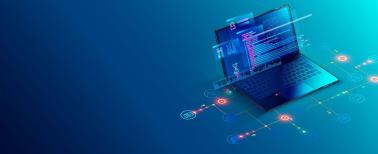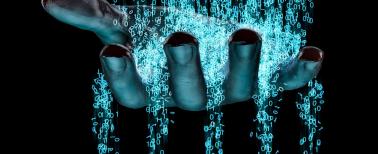Learn Python syntax, data types, OOP, and libraries in this hands-on programming course.
Skills you will gain
- Pythonic Coding Practices: Write efficient, accurate, and readable code using Python’s best practices.
- Python Syntax Mastery: Utilize flow control, functions, exceptions, and functional programming techniques.
- Object-Oriented Programming: Apply classes, inheritance, and overriding to build structured applications.
- Data Handling: Work with Python’s built-in data types like strings, lists, and dictionaries.
- Advanced Python Features: Build iterators, generators, decorators, and context managers for optimized application development.
Course Description
Python language is gaining popularity because its use enhances program correctness and increases programmer efficiency. Because of its clear and elegant syntax, dynamic typing, automatic memory management, and straight-forward module architecture, Python is simple to learn and fun to use. Its code is easy to read, write, extend and modify. This lab-based course offers proficiency in the core concepts of Python, and the skills and knowledge for building applications using any of the hundreds of thousands of task-specific Python libraries.
Topics
- The Python environment: interpretation, integrated development environment, code introspection
- Syntax: flow control, f-string formatting, function protocols, exception handling, functional programming
- Built-in data types: strings, tuples, lists, sets, dictionaries
- Sequence manipulations: slicing, accessing, packing, unpacking, sorting by an arbitrary sort key
- Object-oriented features: classes and inheritance
- Building applications, modules, packages, and libraries
- Popular libraries: os, sys, copy, unittest, cProfile, optparse, unittest, shutil, tempfile, subprocess, and more
- Pythonic thinking: namespaces, internationalization, iterators, generators, decorators, dynamic coding, context managers
- PandasAI
Note(s):
The Python interpreter is free software and runs on all popular platforms. Students are required to have Python 3.7 or higher installed.
Prerequisites / Skills Needed
Significant experience in any programming language.
- Online Self-Paced Work online at your own pace.
| Date | Start Time | End Time | Meeting Type | Location |
|---|---|---|---|---|
| Tue, 01-06-2026 | 12:01am | 12:02am | Online Self-Paced | ONLINE |
| Tue, 04-07-2026 | 11:58pm | 11:59pm | Online Self-Paced | ONLINE |
Online Self-Paced courses have a structured learning environment where students are allowed to complete the work at their own pace. Students may complete the coursework early or use the entire duration of the course. This course is largely self-study with instructor guidance and includes online learning modules, assignments, and/or quizzes. All course materials and assignments will be available at the beginning of the course on Canvas, our learning management system.
For this section, student access begins on January 6, but you may still enroll until February 10. All course work must be completed by 11:59 pm on April 7, 2026.
You will be granted access in Canvas to your course site and course materials approximately 24 hours prior to the published start date of the course.
Required Text: Murach's Python Programming, 2nd Edition, Joel Murach and Michael Urban, Mike Murach and Associates Inc., 2021, ISBN-13: 9781943872749.
Recommended Text: The Quick Python Book, 3rd Edition, Naomi R. Ceder, Manning Publications, 2018, ISBN-10: 1617294039, ISBN-13: 978-1617294037.
Additional Information
AI*: This course introduces AI midway through the term as a supervised enhancement tool, helping students refine their own handwritten coding assignments and reflect on the insights gained, while also evaluating how different GenAI systems support their work.
- Flexible Attend in person or via Zoom at scheduled times.
| Date | Start Time | End Time | Meeting Type | Location |
|---|---|---|---|---|
| Sat, 02-14-2026 | 9:00am | 3:30pm | Flexible | SANTA CLARA / REMOTE |
| Sat, 02-21-2026 | 9:00am | 3:30pm | Flexible | SANTA CLARA / REMOTE |
| Sat, 02-28-2026 | 9:00am | 3:30pm | Flexible | SANTA CLARA / REMOTE |
| Sat, 03-07-2026 | 9:00am | 3:30pm | Flexible | SANTA CLARA / REMOTE |
| Sat, 03-14-2026 | 9:00am | 3:30pm | Flexible | SANTA CLARA / REMOTE |
This class meets simultaneously in a classroom and remotely via Zoom. Students are expected to attend and participate in the course, either in-person or remotely, during the days and times that are specified on the course schedule. Students attending remotely are also strongly encouraged to have their cameras on to get the most out of the remote learning experience. Students attending the class in-person are expected to bring a laptop to each class meeting.
To see all meeting dates, click "Full Schedule" below.
You will be granted access in Canvas to your course site and course materials approximately 24 hours prior to the published start date of the course.
Note: Students are required to have laptops with Python 3.7 or higher installed.
Recommended Texts:
Lutz, Mark. Learning Python, 5th ed. O'Reilly Media, Inc., 2013. ISBN-10: 1449355730 ISBN-13: 9781449355739
David M. Beazley. Python Essential Reference. 4th edition, Addison-Wesley Professional, 2009. ISBN-10: 0672329786 ISBN-13: 9780672329784
Additional Information
AI*: This course encourages students to learn to leverage generative AI tools like ChatGPT to accelerate problem-solving, deepen their understanding of Python concepts, and explore real-world programming use cases.
- Flexible Attend in person or via Zoom at scheduled times.
| Date | Start Time | End Time | Meeting Type | Location |
|---|---|---|---|---|
| Sat, 04-04-2026 | 9:00am | 3:30pm | Flexible | SANTA CLARA / REMOTE |
| Sat, 04-11-2026 | 9:00am | 3:30pm | Flexible | SANTA CLARA / REMOTE |
| Sat, 04-18-2026 | 9:00am | 3:30pm | Flexible | SANTA CLARA / REMOTE |
| Sat, 04-25-2026 | 9:00am | 3:30pm | Flexible | SANTA CLARA / REMOTE |
| Sat, 05-02-2026 | 9:00am | 3:30pm | Flexible | SANTA CLARA / REMOTE |
This class meets simultaneously in a classroom and remotely via Zoom. Students are expected to attend and participate in the course, either in-person or remotely, during the days and times that are specified on the course schedule. Students attending remotely are also strongly encouraged to have their cameras on to get the most out of the remote learning experience. Students attending the class in-person are expected to bring a laptop to each class meeting.
To see all meeting dates, click "Full Schedule" below.
You will be granted access in Canvas to your course site and course materials approximately 24 hours prior to the published start date of the course.
Note: Students are required to have laptops with Python 3.7 or higher installed.
Recommended Texts:
Lutz, Mark. Learning Python, 5th ed. O'Reilly Media, Inc., 2013. ISBN-10: 1449355730 ISBN-13: 9781449355739
David M. Beazley. Python Essential Reference. 4th edition, Addison-Wesley Professional, 2009. ISBN-10: 0672329786 ISBN-13: 9780672329784
This course applies to these programs:







